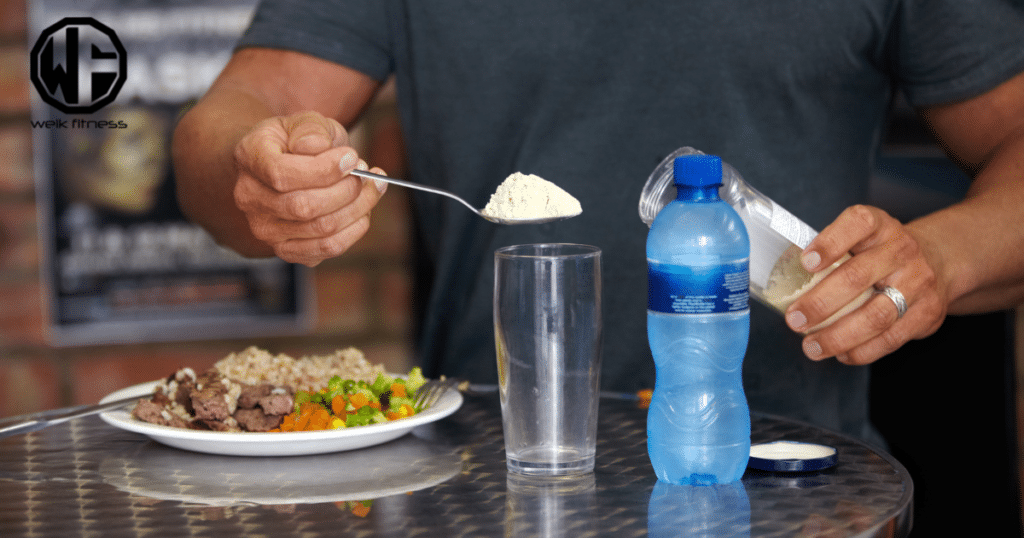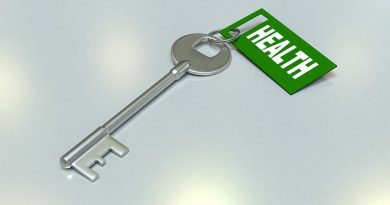3 Reasons Why You Aren’t Making Gains from Your Workouts
There comes a time where your body plateaus and you simply aren’t making gains like you were making previously. It could be that you had the amazing beginner gains we all wished would never end, or it could be that you’ve progressed far enough that your body is static and unwilling to continue making gains unless something is changed.
Your body wants to stay in equilibrium and not change. It is efficient and a well-oiled machine and when you try to reprogram it, generally it wants to fight you back. But stick with it, eventually, through change, the body will adapt to what you want it to do. What that “change” is could be a few different things. Below lays out some of the common reasons why your body stopped making gains and putting on the quality size you’ve been working so hard to attain.
Disclaimer: This article is for informational purposes only and is not meant to treat or diagnose any condition. It is recommended that you speak with your doctor before starting any exercise program, changing your daily nutrition, or adding any supplements to your regimen.
Table of contents

3 Main Reason You Aren’t Making Gains
Below are some of the main reasons you aren’t making gains. It can be frustrating, which is why we want to help you avoid making these mistakes.
1) Not eating enough food hurts making gains
To most people, this is a “duh” statement. Of course, you need to increase calories in order to put on lean muscle mass — notice how I said “lean?” Don’t be one of those people who “dirty bulks” and eats everything in sight in an effort to start making gains. You’ll spend more time, in the long run, doing cardio and dieting after you realize the twenty pounds you put on was mostly body fat. Do it the right way. While it may take more time, the size you put on will be clean gains with very minimal increases in your overall body fat.
Now for the food part. You would be amazed at the people who eyeball their macros every day thinking they know how much they’re taking in when in reality they actually aren’t eating enough food. I recommend that everyone download the app called “MyFitnessPal” (they have it on both iPhones and Android devices) and log your food for a few days and see what your numbers are totaling. Go through your normal routine only with a twist at the end of each meal prep. Eyeball your food, and after you do so, put it on a scale and weigh it out to record in the app. You’ll be amazed at what you find. Let that app help you with your nutrition. It’s free and easy to use.
Not all calories are created equal and everyone’s body reacts differently to different macro percentages, and because of this, you may not be making gains if you’re winging it. Personally, I find having my protein around 1g per pound of body weight works well for me (it gives me around 45% of my calories from protein). From there I fill in the rest of my diet with green leafy vegetables and oatmeal for my carbs and the remainder of my calories from fat sources such as nuts and avocados. I also like using eggs and fish in my diet which kills two birds with one stone — I get my protein and fats from utilizing one food item in my diet.

If you’re having issues taking in enough protein throughout the day, consider using a protein powder. I always recommend using whole foods if possible but out of convenience, not everyone has the ability to sit down enough times during the day due to their busy schedule to eat a whole food protein source (or meal for that matter). I’d recommend staying away from protein bars though, as many of them are loaded with sugars and unwanted carbs. I like protein powders as they are clean and if you wanted to manipulate your macros you can simply add fruit, oats, or natural peanut butter to the shake to do so.
When calculating calories to help with making gains, you can simply enter your information into the app and it will spit out your daily calories based on your basal metabolic rate (BMR) along with how active you are daily (you can also change the macro percentages to your liking), or you can use the following formula and steps to figure it out for yourself if you don’t trust technology. Note: BMR does not equate for how much or how little body fat you have as well as muscle mass. The number from what is calculated may not be an accurate number and should be considered an estimate. Below is how to figure out your BMR by gender.
Men:
BMR = 10 x weight (in kilograms) + 6.25 x height (in centimeters) – 5 x age (in years) + 5
Women:
BMR = 10 x weight (in kilograms) + 6.25 x height (in centimeters) – 5 x age (in years) – 161
Now that you have your BMR, you need to figure out your total energy expenditure (TEE). You’re TEE gives you your total calories burned each day through normal activities and/or exercise. Below is how to figure out your individual TEE (you need to be honest with yourself when you choose your category below).
• sedentary (little or no exercise) = BMR x 1.2
• lightly active (light exercise/sports 1–3 days/week) = BMR x 1.375
• moderately active (moderate exercise/sports 3–5 days/week) = BMR x 1.55
• very active (hard exercise/sports 6–7 days a week) = BMR x 1.725
• extra active (very hard exercise/sports and physical job or 2x training) =
BMR x 1.9
Now that you have the total amount of calories you expend each day, from here you can figure out a game plan on how to put on size. By adding anywhere from 250-500 calories to your daily number you calculated, you should gain anywhere between 0.5-1 pound each week.
2) Repetitive workouts

It’s Monday! That means every bench in the gym is going to be taken with a long line of people waiting as if it were a line at the meat counter. Switch it up if you want to be making gains! If you do the same body parts on the same days using the same exercises with the same rep range and the same amount of sets (that’s a lot of “same” in one sentence)… you get the point, it sounds boring as heck. Your body goes on snooze alert too. It’s used to doing it, so why should it change? It’s on cruise control while you’re in the gym even though you feel you’re pushing yourself hard. You’re not creating a new stimulus to force it to change and grow.
Change it up, and change it up often. I’d say constantly change exercises to keep your muscles guessing but I can then see some people taking me seriously and walking around the gym saying “ha, tricked you” while pointing at their muscles. But in all seriousness for making gains, if you have been doing barbell bench press for months now either change the angle for the exercise or switch to dumbbells. Doing so will hit the muscles differently. Take that very concept and apply it to every body part you train. Mix it up every few workouts and keep it fresh.
What you can change to keep it fresh:
• Rep Range
• Total Sets
• Weight
• Movement Plane
• Exercises
And while you’re at it, stop hitting the same muscle groups on the same day—if you can walk into the gym and the guy at the front desk checking you in can tell you what you’re going to be working that day, you have issues. While it’s good to have a steady regimen, changing it up can take you out of the funk of simply going through the motions as you’re used to working the same muscle groups every Monday or Wednesday or whatever day of the week. Change! Change is good for making gains! Don’t fight it, embrace it!
3) Not enough rest

Resting is a piece of the gains equation that many people neglect. Whether you are training the same body part without giving it enough rest to recover and grow or simply not getting enough sleep at night can really play into the success or failure of your gains.
If you train any given muscle group without it having ample time to recover, essentially you are breaking down the muscle fibers, giving them a small amount of time to recover, and then breaking them down again by training before they are able to fully recovery and rebuild. This ultimately hinders your gains as it’s like taking one step forward and two steps back.
Muscles needs a minimum of 24 hours of rest before you work them again. Not following this will hinder your ability to be making gains. Personally, I’ve found for me the sweet spot seems to be every 72 hours. Everyone is different and while it works for me, that’s not to say it wouldn’t work for you. I’m able to hit each muscle group twice a week with ample rest in-between. Some people swear by hitting the muscle as hard as you can once a week and giving it a full week to recover, but new studies are showing that working a muscle group twice a week is the ideal way to achieve hypertrophy.
As for sleep, we all have busy schedules—whether it’s work related or family related running the kids all around town, you need to make sure you’re getting enough shut eye. Ideally, you should be getting at least eight hours of sleep a night if you want to be making gains. Some people can function fine the next day with much less, but on average, eight hours has been found to be the ideal quantity needed as a minimum.

More is not better in terms of training for making gains. All the time spent in the gym means nothing if you aren’t taking care of your body and giving it enough time to heal and repair. Your muscles don’t grow when you’re in the gym, it’s outside the gym when you’re resting and recovering that they grow. Don’t cut your progress short by hitting the same muscle groups before they are fully recovered and try and work your schedule to allow for more sleep if you’re not getting eight hours a night. Utilizing these principles will surely help you with your overall gains.
Taking the concepts found in this article should allow you to add more quality mass to your frame. Adding muscle takes time, dedication, and consistency. But without the right tools in the toolbox, making gains could be compromised. Make some changes to your workouts and lifestyle and you too can achieve the gains you’ve been looking for. It’s not difficult, but it might take some getting used to.


*Disclosure: This article may contain affiliate links or ads, which means we earn a small commission at no extra cost to you if you make a purchase through these links. These commissions help support the operation and maintenance of our website, allowing us to continue producing free valuable content. Your support is genuinely appreciated, whether you choose to use our links or not. Thank you for being a part of our community and enjoying our content.
PLEASE CONSIDER SHARING THIS ON YOUR SOCIAL MEDIA TO HELP OTHERS LEARN MORE ABOUT THIS TOPIC.





